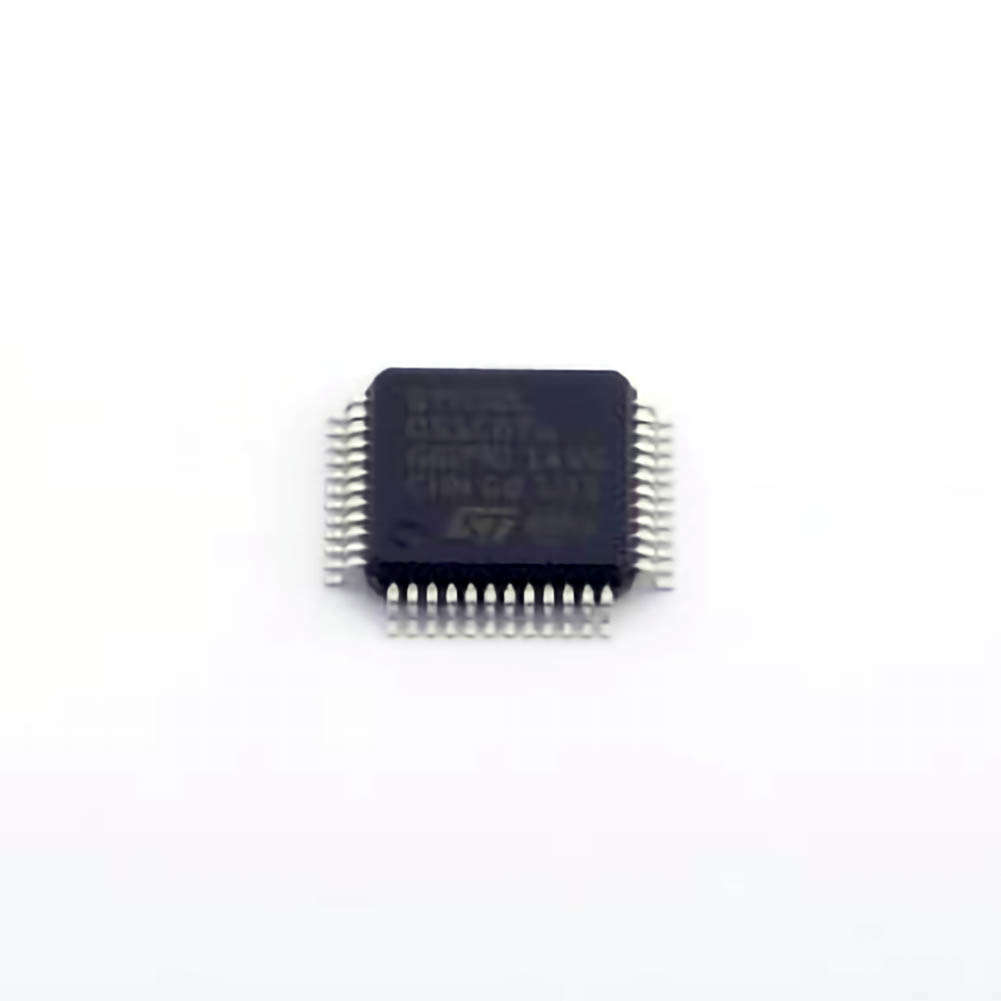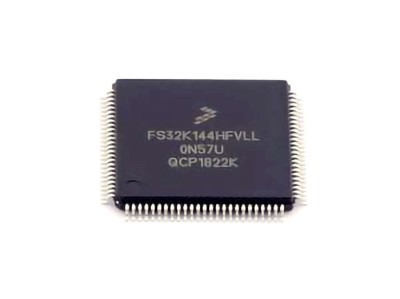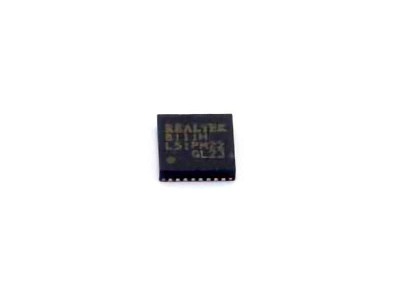
The STM32L051C8T6 microcontroller, a low- Power device from STMicroelectronics, is widely used in a variety of applications, from IoT devices to industrial automation. However, like any complex piece of hardware, developers and engineers often face challenges when working with the STM32L051C8T6. This article provides detai LED troubleshooting strategies and practical solutions for common issues encountered while using this microcontroller, from power supply problems to software-related glitches. With these tips, you can ensure smoother development and more efficient project delivery.
Common Troubleshooting Issues with STM32L051C8T6 and Their Solutions
The STM32L051C8T6, a part of the STM32L0 series, is designed for ultra-low power applications, making it ideal for battery-powered devices and IoT projects. Despite its many advantages, users often encounter a range of common issues, especially during the initial stages of development or when working on complex projects. In this section, we will discuss the most frequent troubleshooting problems associated with the STM32L051C8T6 and provide solutions that will help ensure a smooth development experience.
1. Power Supply Issues
One of the most common problems developers face with the STM32L051C8T6 is related to power supply, particularly when working in low-power applications. Insufficient or unstable power delivery can lead to erratic behavior, such as the microcontroller resetting or failing to start.
Symptoms:
The microcontroller frequently resets or fails to boot.
Unexpected behavior in peripheral devices.
Incorrect voltage readings when using a multimeter or oscilloscope.
Solution:
To resolve power-related issues, ensure that your power supply is stable and meets the requirements of the STM32L051C8T6. This microcontroller operates in a voltage range of 1.65V to 3.6V, so it's crucial to verify that the power supply does not fluctuate outside of this range. If you're using a battery, make sure it has sufficient capacity and isn't nearing depletion.
Use Decoupling Capacitors : Add capacitor s (typically 100nF and 10uF) close to the power supply pins of the STM32L051C8T6. These help filter out high-frequency noise and smooth voltage spikes that may cause instability.
Use Low Dropout Regulator (LDO): When powering the STM32L051C8T6 from a higher voltage source, an LDO regulator can ensure a stable voltage supply, particularly when operating at the lower end of the voltage range.
2. Clock Configuration Problems
Incorrect clock configuration is another common issue that can lead to a microcontroller failing to operate properly. The STM32L051C8T6 relies on different internal and external oscillators, including the High-Speed Internal (HSI) oscillator and the Low-Speed External (LSE) oscillator, to drive its clock system.
Symptoms:
The microcontroller fails to start or runs slower than expected.
Communication peripherals like UART, SPI, or I2C exhibit unreliable behavior.
The system behaves unpredictably or enters into a low-power state unexpectedly.
Solution:
To fix clock configuration issues, verify the clock source settings and ensure that the clock tree is correctly configured in the STM32CubeMX tool or directly in your firmware.
Use STM32CubeMX for Clock Configuration: STM32CubeMX can help you set up the correct clock tree with the appropriate settings for your application. Ensure that you are selecting the right oscillator for your use case.
Check External Crystal Oscillator: If you are using an external crystal oscillator, make sure that the crystal is of the correct frequency and that it's properly soldered onto the board. You should also confirm that the capacitors used with the crystal are of the correct value as specified in the crystal's datasheet.
3. Incorrect GPIO Configuration
General Purpose Input/Output (GPIO) pins are often used for communication with peripherals or sensors. Misconfiguration of these pins can lead to communication failures or incorrect data being transmitted.
Symptoms:
The microcontroller doesn’t respond to button presses or sensor readings.
Peripherals like LED s, motors, or displays are not functioning as expected.
There is a short circuit or excessive power draw from the GPIO pins.
Solution:
Ensure that the GPIO pins are correctly configured in terms of input/output mode, pull-up or pull-down Resistors , and alternate functions.
Verify Pin Mode: Make sure each pin is configured for the correct function (input, output, alternate function, or analog). You can do this easily using STM32CubeMX or manually in your code by writing to the GPIO registers.
Set Pull Resistors: If the GPIO pin is used as an input, make sure to configure it with the correct pull-up or pull-down resistors, especially when interfacing with switches or sensors.
Check for Short Circuits: If you're using multiple GPIO pins, ensure that they are not inadvertently connected together or to a power rail, which could cause excessive current draw or malfunction.
4. Software Debugging Difficulties
Another common issue is debugging software running on the STM32L051C8T6. Whether it's issues with communication protocols or peripheral initialization, tracking down software bugs can be challenging, especially for embedded systems.
Symptoms:
The firmware behaves unpredictably or crashes unexpectedly.
The microcontroller freezes or enters an infinite loop.
Debugging tools fail to connect or display incorrect data.
Solution:
When debugging software-related issues, it's important to make use of the built-in debugging tools available with the STM32L051C8T6, such as SWD (Serial Wire Debug) and JTAG.
Use STM32CubeIDE or Keil MDK: STM32CubeIDE provides a comprehensive debugging environment, with features such as breakpoints, watch variables, and real-time data visualization. If using another IDE, like Keil MDK, ensure that it is configured correctly for the STM32L051C8T6.
Check for Stack Overflow: If the firmware crashes or locks up, check for stack overflow by enabling stack checking in the startup code. Stack overflows can cause unpredictable behavior and are difficult to spot without a debugger.
Use Debugging Print Statements: If you are unable to use a debugger in certain situations, try adding printf-style debug statements in your code to monitor internal variables and system status.
5. I2C/SPI Communication Issues
I2C and SPI are commonly used communication protocols on the STM32L051C8T6. However, improper configuration or hardware-related issues can lead to communication problems.
Symptoms:
Data transmission is corrupted or not occurring at all.
Peripheral devices fail to communicate with the microcontroller.
Timing issues that cause data to be misaligned or lost.
Solution:
To resolve I2C or SPI communication problems, verify the hardware wiring and software configuration:
Check Wiring: Ensure that the wiring of the communication lines is correct and that any necessary pull-up resistors are in place (especially for I2C).
Verify Clock Speed: Make sure that the clock speed of the communication protocol is within the limits of the peripheral devices. Both I2C and SPI have timing constraints that must be respected.
Use the STM32CubeMX Configuration Tool: STM32CubeMX can be used to configure I2C and SPI peripherals correctly, including enabling interrupt handling and DMA for efficient data transfer.
Further Troubleshooting Tips for STM32L051C8T6
In Part 1, we covered several common issues that STM32L051C8T6 users face, including power supply problems, clock configuration errors, GPIO misconfigurations, and communication protocol issues. In this second part, we will continue to explore additional troubleshooting challenges and offer more solutions to help optimize the performance and reliability of your STM32L051C8T6-based projects.
6. Excessive Power Consumption
One of the standout features of the STM32L051C8T6 is its ultra-low power consumption. However, improper configuration can lead to excessive power consumption, which is detrimental in battery-powered applications.
Symptoms:
Higher-than-expected current draw.
Short battery life in portable devices.
Difficulty entering low-power modes.
Solution:
Ensure that the microcontroller is configured to operate in the appropriate low-power mode, and disable any unnecessary peripherals.
Use Low-Power Modes Effectively: The STM32L051C8T6 offers several low-power modes, such as Sleep Mode, Stop Mode, and Standby Mode. These modes help reduce power consumption when the system is idle.
Turn Off Unused Peripherals: Ensure that any peripherals not in use are powered down to save energy. This can be done by disabling their clocks using the RCC (Reset and Clock Control) registers.
7. Watchdog Timer Resets
The independent watchdog (IWDG) and window watchdog (WWDG) are safety features on the STM32L051C8T6. While useful for ensuring system stability, these timers can cause unwanted resets if not properly configured or used.
Symptoms:
Unexpected resets or system reboots.
The system works intermittently and then suddenly resets.
Solution:
When using watchdog timers, make sure to configure them correctly in your firmware. If the watchdog timer is enabled, ensure that it is periodically refreshed (kicked) within the time window, or else the microcontroller will reset.
Disable the Watchdog Timer for Debugging: If you're facing unexplained resets during development, you can temporarily disable the watchdog timer to help isolate the cause of the resets.
Adjust Watchdog Timeout: If the system is not able to refresh the watchdog within the time window, you may need to adjust the timeout to match your application’s behavior.
8. Flash Memory Issues
Flash memory corruption or problems with reading/writing to flash can sometimes occur, especially in applications where frequent writing to non-volatile memory is required.
Symptoms:
Incorrect program execution after a reset.
The microcontroller behaves as if its firmware has changed unexpectedly.
Data written to flash is not retained after a reset.
Solution:
Check Flash Write Procedures: Ensure that you are using the correct procedure for writing to and erasing flash memory. The STM32L051C8T6 has certain restrictions on writing to flash, such as requiring the sector to be erased before new data can be written.
Use External Flash Memory: If you're writing large amounts of data to flash, consider using external flash memory (via SPI or QSPI) to reduce wear and tear on the internal flash.
9. USB Communication Failures
If your STM32L051C8T6 project includes USB communication, issues such as failed enumeration or unreliable data transfer can occur.
Symptoms:
The device fails to connect to a host computer.
Data transfer via USB is unreliable or corrupted.
Solution:
Ensure the USB peripheral is correctly configured in your firmware. STM32CubeMX can simplify this process by generating initialization code for USB devices.
Check USB Voltage Levels: Ensure that the USB voltage levels meet the USB specification.
Use STM32 USB Libraries: Utilize the STM32 USB Device Library to handle USB communication protocols, ensuring correct handling of enumeration and data transfer stages.
Conclusion
The STM32L051C8T6 microcontroller is a versatile and powerful device for low-power embedded applications. However, like any embedded system, it comes with its own set of challenges during development. By carefully addressing common issues such as power supply problems, clock configuration errors, GPIO misconfigurations, and communication protocol issues, developers can build robust and reliable systems. In this article, we’ve provided practical solutions to help you troubleshoot and resolve these issues, ultimately ensuring the success of your STM32L051C8T6-based projects.
If you are looking for more information on commonly used Electronic Components Models or about Electronic Components Product Catalog datasheets, compile all purchasing and CAD information into one place.


